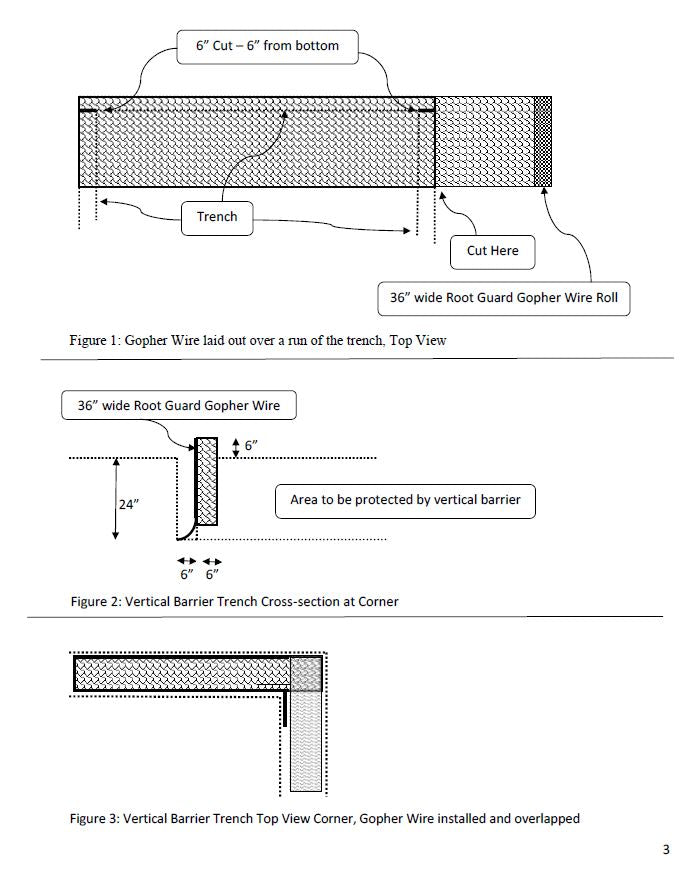
How to Install a Subterranean Fence
Share
Gopher wire is specifically designed for gopher exclusion. The hexagonal woven mesh measures 3/4” across the flats of the hexagon and are small enough to keep young gophers out (a size determined by a young gopher’s shoulder girth at the weaned age of about 8 weeks). The 20 gauge wire stands are thick enough to resist potential gopher chew through. Root Guard Gopher wire rolls are “double galvanized”— first the wire strand is electroplate galvanized, then its woven into the mesh and finished with a second “hot-dipped galvanizing after weaving”. This double galvanizing prevents rust and deterioration of the steel when the wire is buried.
Vertical Barrier General Information:
Most gopher activity is near the surface so a vertical barrier 24” deep with a 6” horizontal flat extending outward at the bottom of the trench and 6” extending above grade will provide good gopher resistance. We’ve had many customers install this type of vertical barrier with great success.
Tools needed:
6” wide Trenching Shovel or mechanical Trencher
Tape Measure
Stakes and string or marking paint
Underground utility marker (rent tool or hire job out)
Root Guard Gopher Wire Roll(s)
Wire cutters
Landscape staples
Hammer
How to determine how much wire you’ll need for the job:
We recommend our 36” wide x 100’ long Root Guard Gopher Wire Rolls.
Add the length of all the sides of the area to be protected and divide by 100 to arrive at the quantity of rolls you’ll
need for the job. Any partial roll needed, round up using the following guidelines: If the excess is less than .25
buy our 36” x 25’ roll, and if greater than .25 buy another 100’ roll.
Preparation:
Mark all underground utilities
Mark out perimeter
Runs need to be straight and the bottom smooth and even to prevent buckling of the wire mesh.
Installation:
Dig trench 24” deep and 6” wide
Roll wire out on the ground next to the trench
At the end of each run cut the length at the outside edges of the trench.
Then cut a horizontal 6” long slit in the wire mesh 6” from the bottom of the wire so you can form an
overlap at the corner (see Figures 1, 2 and 3)
Insert the wire vertically in the trench forming the outward facing flap at the bottom
Fold the wire over at each corner
Using landscape staples stake the wire in place as needed
Repeat for each run
Once all runs are installed stake corner seams securely in place
Fill and compact trenches
Maintenance:
Weekly walk perimeter look for any gopher activity inside and outside the barrier. Any activity should be
stopped.
Remove any foliage crossing over the barrier
Straighten up any area where the above ground wire is bent
Periodically plow or rotor-till the area adjacent to the barrier. Outside the barrier is preferred, but if not
accessible then inside is ok. Disturbing the soil next to the barrier prevents plant growth(food source for gophers), and destroys burrows and tunnels.
Important safety note:
Anytime trenching know where and if there are any underground utilities before digging.
